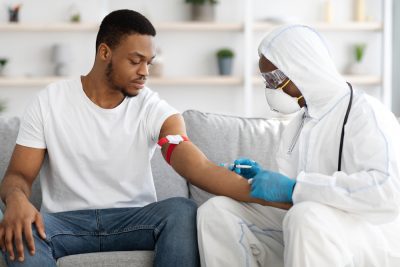Discovering an unexpected growth on your body can cause significant concern. While many growths turn out to be harmless, understanding the different types, recognizing warning signs, and knowing how to respond appropriately is essential for maintaining both your health and peace of mind.
Types of body growths
Body growths fall into several distinct categories requiring different levels of attention and care. Benign growths, including moles, lipomas, and cysts, typically pose no health risks but should be monitored carefully for any changes in appearance, size, or texture.
Malignant growths may indicate cancer and require immediate medical attention. These often present as irregularly shaped areas that grow quickly or show unusual discoloration. Early identification and treatment of these growths significantly impact health outcomes.
Skin tags represent another common type of growth, particularly among people with diabetes or those carrying extra weight. These small, soft growths typically appear in areas where skin experiences regular friction, such as the neck, underarms, or groin. While generally harmless, they can be removed if they cause discomfort or cosmetic concerns.
Warts, caused by the human papillomavirus (HPV), appear anywhere on the body. Though usually benign, their contagious nature makes proper management important for preventing spread to other body areas or people.
Critical warning signs
Several key indicators warrant immediate medical attention when observing growths. Sudden increases in size or rapid growth patterns may signal concerning changes. Pain, itching, or bleeding from a growth should never be ignored, as these symptoms might indicate inflammation, infection, or more serious conditions.
Irregular borders or uneven coloration represent important warning signs, particularly in moles or other pigmented growths. Changes in shape or texture over time, especially when occurring rapidly, require professional evaluation. The appearance of multiple growths in a short period also warrants medical attention.
Taking appropriate action
Upon discovering a growth, begin by carefully documenting its characteristics. Note the exact size, shape, and color, keeping detailed records through written descriptions or photographs to track any changes over time. This information proves invaluable during medical consultations.
While the internet offers abundant health information, resist the urge to self-diagnose. Online searches often lead to unnecessary anxiety and potentially incorrect conclusions. Instead, schedule an appointment with a qualified healthcare provider who can properly evaluate the growth and recommend appropriate action.
Treatment approaches
Healthcare providers may recommend various treatment options depending on the growth’s nature and characteristics. Surgical removal provides a definitive solution for suspicious or bothersome growths while allowing for tissue examination through biopsy if necessary.
Cryotherapy, which involves freezing the growth with liquid nitrogen, offers an effective treatment option for warts and skin tags. This outpatient procedure typically requires minimal recovery time while providing good results.
Some growths respond well to topical medications, particularly warts and certain skin conditions. More advanced cases might benefit from laser therapy, which can remove growths with minimal scarring and shorter recovery periods.
Prevention strategies
While preventing all growths proves impossible, several measures help reduce their likelihood. Maintaining good skin care practices, including regular cleansing and moisturizing, helps prevent irritation that might contribute to growth formation.
Sun protection plays a crucial role in preventing harmful growths. Regular use of sunscreen and protective clothing helps shield skin from UV radiation that can lead to potentially dangerous growths, including skin cancer.
A balanced lifestyle contributes significantly to skin health. Regular exercise improves circulation and overall health, while a nutritious diet supports the body’s natural defense systems. Avoiding known irritants, including harsh chemicals and rough fabrics, helps maintain skin integrity.
Managing psychological impact
The emotional impact of discovering a body growth often proves significant. Anxiety about potential health implications affects many individuals, making psychological support as important as physical care. Building a strong support network helps manage these concerns effectively.
Sharing concerns with trusted friends or family members provides emotional relief while ensuring someone else knows about and can help monitor any changes. Understanding your condition through reliable medical sources helps reduce fear and uncertainty about the future.
Establishing monitoring routines
Regular self-examination helps identify new growths or changes in existing ones early. Creating a routine for monthly skin checks ensures consistent monitoring while helping develop familiarity with your body’s normal patterns.
When changes occur, prompt action improves outcomes. Maintaining a relationship with healthcare providers ensures ready access to professional evaluation when needed. Regular check-ups provide opportunities for professional monitoring of existing growths and early detection of new concerns.
Following these guidelines helps ensure proper management of body growths while maintaining overall health and well-being. Remember that early detection and appropriate response often lead to better outcomes in addressing any health concern.
This story was created using AI technology.














